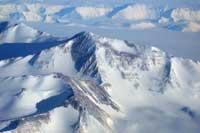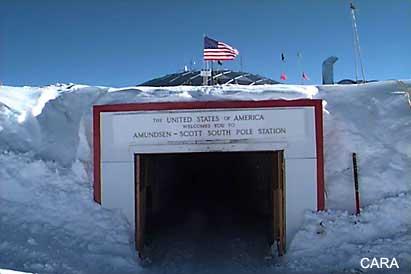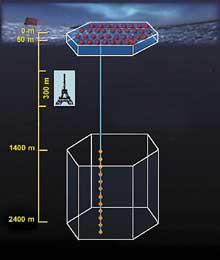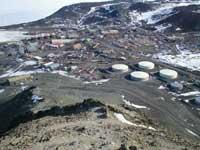A road to the center of Antarctica
2003/02/23 Galarraga Aiestaran, Ana - Elhuyar Zientzia

The Scott-Amunds station is the scientific base of the USA. In the South Pole and currently can only reach it and other bases by air. This greatly limits communication, since all types of materials cannot be transported. In addition, flights depend on time. The only solution is the road connecting the coast with the South Pole.
The road will have a length of 1,600 km, it is estimated that it will be operational for 100 days a year and an estimated cost of 12 million dollars. The motorway between Pamplona and Huesca has a budget of 85 million euros. In any case, the work for its realization will not be slow. They will clean the snow, fill the holes, deshelter... and every spring they will have to repair the changes caused by winter ice movements and cracks. However, cracks do not vary too much year after year. The mountains of Maud Reina have had to be studied. These mountains, located between the station of MacMurdo and the South Pole, seem like an impregnable wall, but have found an adequate step: Leverett Glacier.
Thirty days of travel
Only authorized convoys can use the road. Special vehicles such as tractors and sledges with rear trailer will be used. It will take twenty days to go and only ten days to return to the coast. The difference is not just a matter of weight: The South Pole is located about 3000 m high, so the one-way trip ascends in slope.

In passing, they want to install fiber optic between both bases. It seems that the Scott-Amunds station is out of reach of communications satellites, so research data cannot be sent in real time. Fiber optics will overcome this problem.
It seems that scientists see it very well. More and more research is being conducted and they need more material to carry them out. Now, for example, we are working on the Ice Cube project. The Ice Cube is a special observatory for detecting particles emitted by the Sun, neutrins. Its name derives from the appearance of a piece of ice of a cubic kilometer located under the base, in which are the detectors of dispersed neutrinos. Once underway within 5 years, it will generate 20 gigabytes of data per day. Well, something!
Ideal place for research
The South Pole, due to its geographical and geophysical characteristics, is the ideal place to carry out various investigations. For example, the atmosphere above Antarctica is extremely cold and the water vapor of the air is icy. As a result, it is very transparent and the infrared and microwave telescopes hardly have a drawback in receiving images.

In addition, it is very close to the axis of rotation of the Earth. Therefore, the stars practically never enter and can be made long-term observations without interruption. For example, they have been able to observe the Sun for a hundred consecutive days. On the other hand, its proximity to the Magnetic Pole helps to study the exterior of the magnetosphere and its interaction with the ionosphere. This is very useful to analyze the auroras and other phenomena that occur in the atmosphere.
At the base of Scott-Amunds there is a special tool for carrying out these studies and other studies. The place where the laboratory that studies seismology and radio waves is located is known as a silent zone. It is the ideal place to measure global seismic waves and long period oscillations. In the clean air part, research related to air is carried out. It is situated in the sense that the wind blows towards the South pole, which allows it to have no indication of life or pollution. It is, therefore, the cleanest air in the world. And the ‘dark side’ is protected from strange lights and other electromagnetic radiations. There are microwave, infrared and neutrino telescopes.
Treaty of Antarctica
It is clear that numerous investigations are carried out in Antarctica and that road transport of the material necessary to carry them out is a good solution. But will this road not become a commercial exploitation road in Antarctica? It seems that ecologists are not afraid for the moment.

In fact, the treaty that supports Antarctica is in force until 2041. This agreement, signed in 1959, prevents the use of Antarctica for military purposes, guarantees the freedom of scientific research and protects the natural resources of it. It leaves no room for doubt: the commercial exploitation of Antarctica is strictly forbidden. In addition, the road will cross the area without life and can only be used by authorized convoys. Consequently, ecologists have not shown their opposition to the road.
Published in 7K.

Gai honi buruzko eduki gehiago
Elhuyarrek garatutako teknologia





